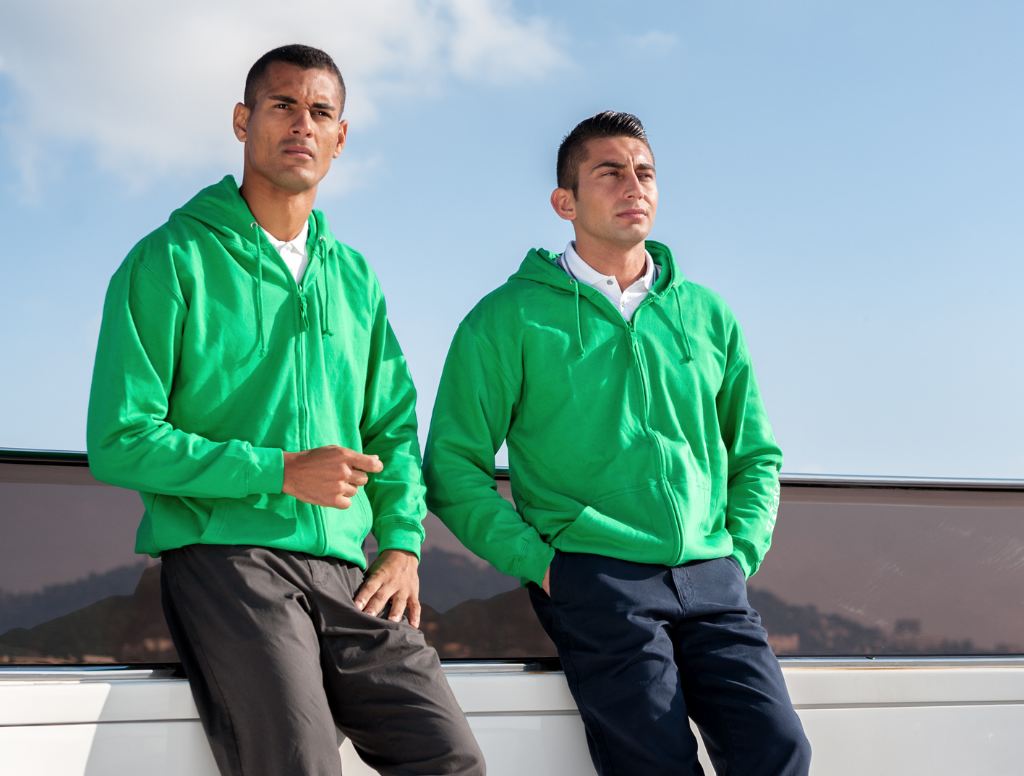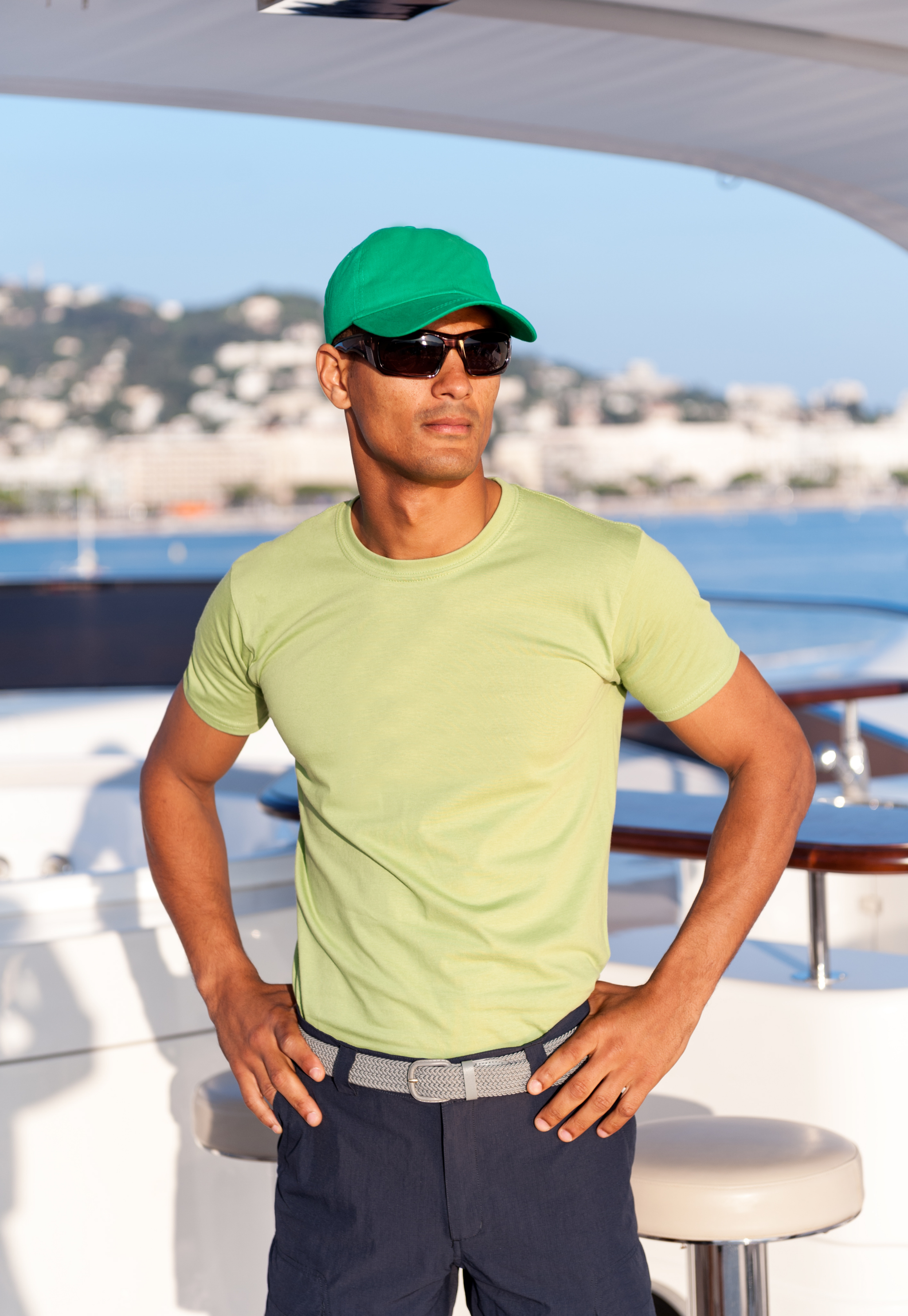Why is eco friendly/ethical yacht wear so important all of a sudden?
As society becomes increasingly aware of the negative impact of unsustainable practices on the planet, it has become important for everybody to play their part in developing a more sustainable way of life. This is especially true within industries like yachting (due to its direct interaction with the marine environment) and clothes manufacturing (due to the excessive waste the clothing industry produces and the unethical processes of multiple supply chains). Considering yacht wear is an intersection of both, it’s particularly crucial to raise awareness and make changes.
What exactly is eco-friendly/ethical yacht wear?
Eco-friendly/sustainable yacht wear is simply yacht clothing that’s produced in a way that impacts the environment as minimally as possible. Whether you’re a manufacturer or a customer, you can make decisions that will support environmentally friendly and sustainable methods of production. Over the course of this article, we’ll explore what approaches both parties can take to encourage eco-friendly yacht wear.

As a customer, you don’t have control of the manufacturing process, but by using collective buying power, you can influence unsustainable businesses to adopt more eco-friendly production methods by only purchasing from sustainable, eco-friendly businesses. As businesses realise that eco-friendly production is becoming a bigger consideration for their customers, they’re more likely to adopt sustainable practices in an effort to retain their business.
If prior to this, sustainability wasn’t your main concern when making buying decisions for yacht wear, you may think making the switch to a more sustainable alternative will be more expensive. However, general practice is for yacht crews to throw out their uniforms after one season (due to the high turnover and the physicality of some of the onboard duties). In the long-term, investing in higher-quality, sustainably produced yacht wear that gets replaced less often and lasts much longer is the cheaper option.
It’s also important to note that as consumer awareness around ethical issues increases, some businesses may cover up aspects of their supply chain that are unsustainable and/or unethical in an attempt to preserve business and limit damage to their brand. With this in mind, it’s important to undertake research on where the yacht wear you’re buying comes from and how it was made.
Sea Design, for example, manufactures their own range of yacht crew clothing in Europe and their fabric is also produced in Europe. This we believe ensures quality and reduces the carbon footprint, avoiding shipping from Asia and using cheap labour.

Manufacturers - taking responsibilty for all areas of the supply chain
Thoroughly researching the supply chain is not solely advice for customers. If your business is involved with unethical/unsustainable production, the fallout could severely damage your brand/earning potential, and claiming ignorance is unlikely to repair the damage that this would cause. With this in mind, businesses must take responsibility and carry out detailed research of all partnering organisations to make sure their supply chain is as ethical and sustainable as possible.
In today's digital age, most businesses have a website and social media profiles to engage with customers and conduct business. By using these online spaces to educate customers about sustainable, eco-friendly yacht wear, your business will be helping to fight unsustainable manufacturing processes while spreading information and guidance on what can be done to fight these issues. Taking a specific stance on these issues can help you attract the kind of customers you’re targeting and help strengthen your brand's image as an ethical, sustainable source for yacht wear.
Another aspect of sustainable production to consider is getting involved in environmental improvement initiatives using a proportion of your sales profit, whether it’s paying local fishermen in developing nations to extract harmful materials from the sea or donating to a charity that supports marine animal health. These are two excellent ways your business can contribute to sustainability and help prevent environmental damage outside of manufacturing.
Investing your research and development budget in nurturing new, more sustainable means of production is a worthwhile investment. Some companies are even gathering recycled materials and using them as part of their manufacturing process, for example, the Adidias Parle shoe, which is made from reclaimed marine plastic waste. As this becomes more advanced and more commonplace, businesses will need to have innovative and sustainable methods of production to remain competitive.
In short, everyone is responsible for pushing sustainable garment production. Whether you’re a consumer or a seller, you’ve got the ability to help make an impact and drive the push towards a more eco-friendly, sustainable and ethical yacht-wear industry. If this blog has piqued your interest in ethical purchasing decisions, check out our range of ethically manufactured yacht wear today, and don’t hesitate to get in touch with us if you have any questions about our credentials or capabilities.


